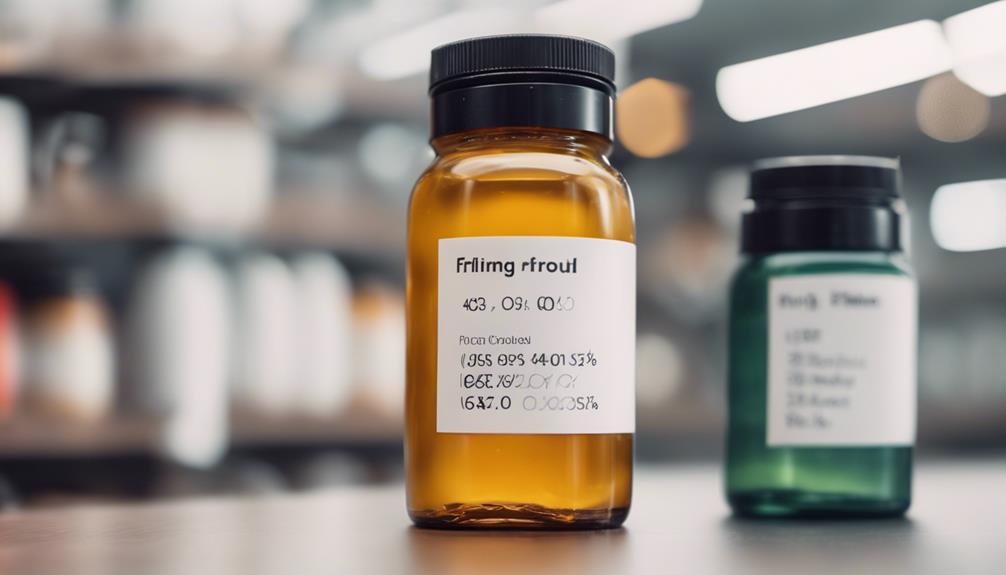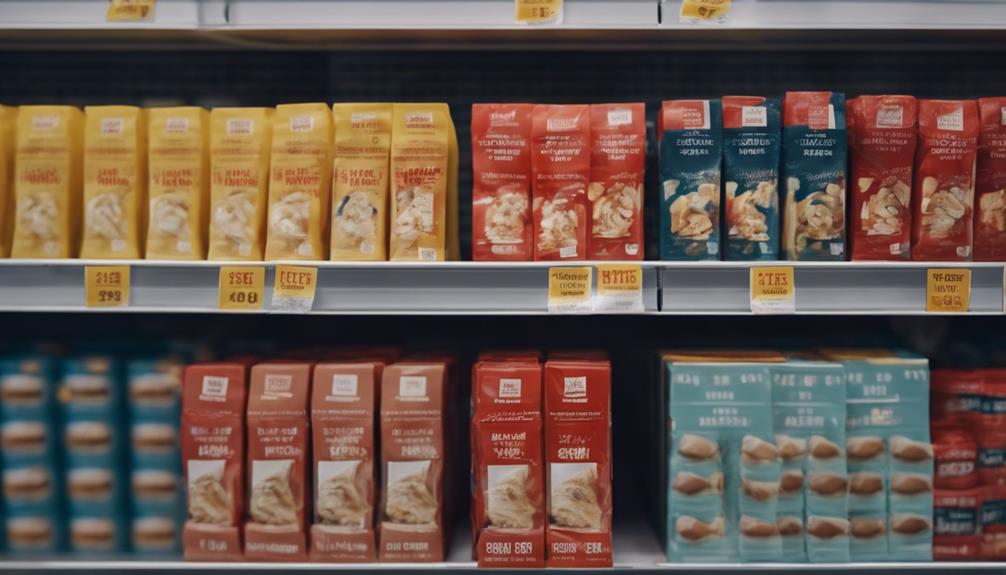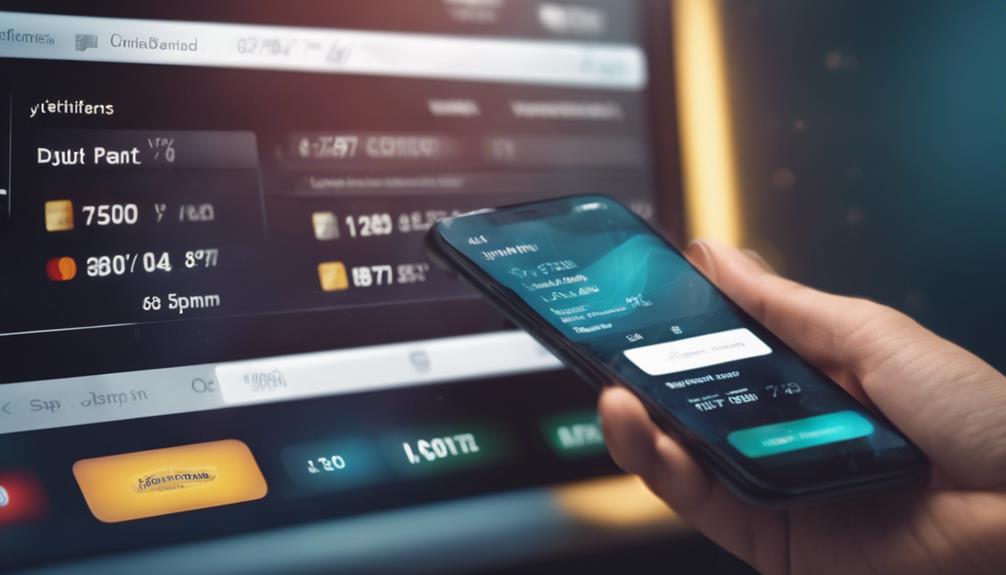Understanding the impact of pricing on consumer behavior is essential. Pricing strategies play a significant role in decision-making and shape perceptions of value. Higher prices often hint at quality and exclusivity, while discounts create urgency. Anchor and decoy pricing techniques influence choices by setting reference points and making options more appealing. Consumers associate higher prices with better quality, affecting their evaluation of products. Implementing psychological pricing strategies strategically can sway consumer behavior. If you explore further, you will uncover how these tactics can guide purchasing decisions and affect consumer perceptions in the marketplace.
Key Takeaways
- Pricing strategies influence purchasing decisions through emotional responses.
- Anchor pricing sets value perception, while decoy pricing influences choice.
- Consumers associate higher prices with quality and prestige.
- Price segmentation optimizes pricing for different consumer groups.
- Value packages and psychological pricing strategies shape consumer perceptions.
Pricing Psychology

When considering consumer behavior, pricing psychology plays an essential role in influencing purchasing decisions. Pricing strategies are crafted to tap into the psychology of consumers, affecting their perception of products and influencing their buying behavior. The way prices are presented can evoke specific emotional responses and shape how consumers evaluate the value of a product.
Consumers often associate higher prices with higher quality and prestige, making them more inclined to purchase a product at a premium. On the other hand, discounts and offers create a sense of urgency and excitement, appealing to the emotional side of consumer behavior. Rational decisions are influenced by lower prices, prompting consumers to make practical choices based on affordability.
Understanding pricing psychology allows businesses to strategically position their products to attract different segments of consumers. By leveraging pricing techniques effectively, companies can steer consumer behavior towards desired outcomes, ultimately driving sales and fostering brand loyalty.
Anchor and Decoy Pricing

When businesses implement anchor pricing, they establish a high starting point to influence how consumers view subsequent options.
Decoy pricing, on the other hand, introduces a less desirable product to make the main choice seem more appealing.
These strategies tap into consumer psychology, shaping perceptions of value and guiding decision-making processes.
Pricing Strategies Comparison
Comparing anchor and decoy pricing strategies reveals their distinct approaches to influencing consumer behavior through pricing tactics.
Anchor pricing sets a higher initial price to serve as a reference point for consumers, shaping their perception of value.
On the other hand, decoy pricing introduces a less attractive option to make the desired product appear more appealing in comparison.
Both strategies strategically impact consumer decision-making by altering perceived value.
While anchor pricing focuses on establishing a benchmark for consumers to evaluate the worth of a product, decoy pricing manipulates the context to steer consumers towards a specific choice.
Understanding these pricing strategies' nuances can help businesses leverage consumer psychology to influence buying behavior effectively.
Consumer Decision Influences
Anchor pricing and decoy pricing are influential techniques that shape consumer decision-making by setting reference points and manipulating product comparisons. When businesses strategically use anchor pricing, they establish a starting point that consumers use to judge the value of other options. Decoy pricing, on the other hand, introduces a less appealing product to make the desired choice appear more attractive. This comparison nudges consumers towards the preferred option. To illustrate further, consider the following table:
| Anchor Pricing | Decoy Pricing |
|---|---|
| Sets reference point for comparison | Introduces less attractive option |
| Influences decision-making process | Makes preferred option seem more appealing |
| Manipulates product comparisons | Encourages consumers to choose desired product |
| Shapes perception of value and quality | Triggers rational and emotional responses |
| Impacts consumer behavior | Influences purchasing decisions effectively |
Psychological Pricing Effects
Utilizing psychological pricing effects, such as anchor and decoy pricing strategies, can greatly impact consumer perceptions and purchasing decisions. When implementing these tactics, keep in mind the following:
- Anchor Pricing: The initial price a consumer encounters sets the standard for comparison, influencing how they assess subsequent options.
- Decoy Price Effect: Introducing a less appealing product can make the desired choice appear more attractive and valuable to consumers.
- Quality Perception: Higher prices often signal superior quality in the minds of consumers, affecting their buying choices.
- Affordability Perception: Prices ending in 9 or using specific pricing techniques can create an illusion of affordability, drawing in more consumers.
Understanding these psychological pricing nuances can help you shape consumer behavior effectively.
Quality Perception Influence

Higher prices are commonly linked to a perception of better quality, which greatly influences consumer behavior. When consumers encounter products with higher price tags, they often associate them with superior quality, leading to a positive impact on their purchasing decisions. This quality perception can be intentionally shaped by businesses through strategic pricing strategies. By setting prices at different levels, companies can convey specific brand images that influence how consumers view the quality of their products.
Consumers tend to equate higher prices with better quality, believing that products priced at a premium level are more luxurious or perform better. This association can create a sense of prestige and exclusivity around a product, further enhancing the perceived quality in the eyes of consumers. As a result, the strategic use of pricing not only affects the perceived value of a product but also plays an important role in shaping consumer perceptions of quality in the market.
Bargaining and Discount Effects

When considering bargaining and discount effects in consumer behavior, understanding how these strategies tap into your desire for value is crucial. Discounts can create a feeling of scoring a good deal, swaying your purchasing decisions.
Negotiating or receiving discounts often leaves you with a sense of accomplishment and satisfaction.
Bargaining Strategies
Discounts and offers play an essential role in attracting consumers and influencing their purchasing decisions through creating a sense of value and opportunity. When considering bargaining strategies in pricing, keep in mind the following key points:
- Consumers are drawn to discounts and promotions due to the perceived value they offer.
- Emotional responses triggered by discounts can sway consumer behavior significantly.
- Products with discounts are often viewed as better deals, impacting buying decisions.
- Leveraging tactics like limited-time offers or bundle deals can enhance consumer engagement and drive sales effectively.
Discount Psychology
How do consumers perceive value and make purchasing decisions when presented with bargaining and discount effects in pricing?
Discount psychology plays an essential role in shaping consumer behavior. The allure of discounted prices taps into consumers' emotions, influencing their decision-making process. When customers feel they're getting a good deal, it triggers positive emotional responses, leading to a sense of accomplishment and satisfaction. This emotional connection can foster increased loyalty towards a brand.
Bargaining and discount strategies not only attract price-sensitive shoppers but also drive sales volume. Leveraging discounts effectively can have a major impact on consumer behavior, influencing their purchase decisions and overall perception of value. Understanding the psychology behind discounts is key to creating pricing strategies that resonate with consumers.
Pricing Strategy Impact Analysis

Analyzing the impact of pricing strategies on consumer behavior reveals key insights into purchasing decisions and preferences. When considering pricing strategies, several key factors come into play:
- Anchor Pricing: Setting an initial price for comparison can greatly influence consumer behavior. By anchoring a product with a specific price point, consumers use this as a reference when evaluating the value of other options.
- Decoy Pricing Tactics: Introducing less appealing options alongside a desired product can make the preferred choice appear more attractive. This tactic manipulates consumer perceptions of value and can drive purchasing decisions.
- Quality Perception: Consumers often associate higher prices with better quality. This connection between pricing and quality impacts how consumers evaluate products and influences their purchasing behavior.
- Price Segmentation: Implementing price segmentation strategies allows businesses to cater to different consumer segments by offering varying price levels. By tailoring prices to specific market segments, companies can optimize their pricing strategy to appeal to diverse consumer groups.
Value Packages Influence

When businesses offer value packages, like bundling products together, they can boost how consumers perceive the worth of the deal.
You're more likely to see the value in packages that combine products at a competitive price point.
Bundling products in value packages can make the offer more appealing and attractive to you.
Bundle Pricing Strategies
Bundle pricing strategies, such as value packages, play a significant role in influencing consumer behavior by enhancing perceived value and promoting increased purchasing. When considering bundle pricing, keep in mind:
- Enhanced Perceived Value: Bundling products together creates a perception of increased value for consumers.
- Convenience and Cost-Effectiveness: Value packages offer a convenient and cost-effective way for customers to purchase related items together.
- Increased Sales: Bundling products can lead to increased sales as it encourages customers to buy more than they initially planned.
- Savings and Convenience: Consumers are attracted to bundle pricing due to the perceived savings and convenience it provides.
Perceived Value Perception
Enhancing the perceived value of products through value packages can greatly impact consumer behavior and purchase decisions. Value packages, by bundling products together, create a sense of holistic value and convenience for consumers. This bundling strategy often leads consumers to perceive the products as a better deal, increasing their purchase intent.
The perceived discounted price of value packages influences consumer decision-making, attracting those seeking cost-effective solutions. Consumers are more inclined to opt for value packages due to the all-encompassing solutions they offer. As a result, pricing strategies that focus on enhancing perceived value through bundling can have a significant impact on consumer behavior, driving purchasing behavior towards these appealing and convenient package deals.
Pricing Tier Effects
To understand the impact of pricing tiers on consumer behavior in relation to value packages, consider how different pricing levels can influence purchasing decisions. Here are some key insights into how pricing tier effects can influence consumer behavior:
- Value packages enhance perceived value, increasing sales.
- Discounted prices in value packages attract price-sensitive consumers.
- Consumers view value packages as cost-effective, driving purchases.
- Bundling products creates a sense of getting more for the money spent, appealing to consumers seeking good deals.
Psychological Pricing Strategies

Psychological pricing strategies shape consumer perceptions and behaviors by strategically setting prices to influence purchasing decisions. These tactics leverage customer perception, trigger emotional responses, and utilize anchor pricing to guide individuals towards specific buying choices.
One common technique is using prices that end in 9, which can make a product seem more affordable and appealing to potential buyers. Additionally, decoy pricing involves introducing a less desirable option next to the main product to enhance its perceived value. Anchor pricing plays an essential role in psychological pricing as it provides a reference point for customers to evaluate other prices against.
Price Segmentation Effects

Implementing price segmentation strategies can significantly impact consumer behavior by tailoring pricing options to match individual preferences and willingness to pay. Price segmentation involves offering different prices to different consumer segments based on their willingness to pay and perceived value.
Here are some key insights into the effects of price segmentation:
- Targeted Pricing Strategies: Companies can effectively target specific market segments by tailoring prices to match their preferences and purchasing behaviors.
- Enhanced Customer Satisfaction: Price segmentation can enhance customer satisfaction by offering pricing options that align with individual needs and budgets.
- Increased Sales and Revenue: Implementing price segmentation strategies can lead to increased sales and revenue by appealing to a broader range of consumers.
- Optimizing Profitability: Effective price segmentation requires understanding consumer behavior, market dynamics, and pricing strategies to optimize profitability.
Pricing Experiment Insights

Pricing experiments provide valuable insights into consumer behavior and purchasing patterns, helping companies optimize their pricing strategies for maximum impact. By conducting A/B tests, companies can observe how adjusting prices can significantly affect conversion rates and sales. Smart pricing methods that align with company values can enhance customer engagement and loyalty. Implementing psychological pricing techniques, such as setting prices ending in 9, can create a perception of affordability and attractiveness among consumers. Furthermore, leveraging decoy pricing strategies, where less appealing options are introduced to steer consumer choices towards desired products, can influence purchasing decisions effectively.
| Pricing Experiment Insights | Implications |
|---|---|
| A/B Tests | Show impact on conversion rates and sales |
| Psychological Pricing Techniques | Create perception of affordability and attractiveness among consumers |
| Decoy Pricing Strategies | Influence consumer choices towards desired products |
| Price Segmentation Strategies | Target diverse market preferences and behaviors by offering different price levels to consumers |
Consumer Behavior Implications

Shifting focus to consumer behavior, understand how pricing influences perceptions and drives purchasing decisions. When it comes to consumer behavior implications, pricing strategies play an important role in shaping how individuals perceive products and make buying choices. Here are four key points to keep in mind:
- Perception Influence: Consumers' attitudes and behaviors are greatly impacted by how prices are presented and perceived.
- Exclusivity and Quality: Higher prices can create a sense of exclusivity and quality in the minds of consumers, influencing their purchasing decisions.
- Sales Influence: Different pricing strategies can be utilized to shape consumer behavior and ultimately increase sales.
- Psychological Impact: Understanding the psychology of pricing is essential for effectively engaging with consumers and driving their purchasing decisions.
Frequently Asked Questions
How Does Pricing Affect Consumer Behavior?
When it comes to consumer behavior, pricing plays an essential role. Prices directly impact how you perceive a product's value and ultimately influence your purchasing decisions.
Higher prices can create an impression of quality and exclusivity in your mind, affecting your buying choices. Various pricing strategies, such as anchor pricing and psychological pricing, can sway your decision-making process.
Your satisfaction as a consumer is closely tied to how pricing and packaging are handled, shaping your overall buying behavior.
What Is the Price Effect on Consumers?
When it comes to the price effect on consumers, your purchasing decisions can be swayed by various factors. Prices impact your perception of product quality and value. Higher prices may lead you to believe in superior quality, while discounts can make you feel like you're getting a good deal.
Different pricing strategies can influence your attitude towards a product and ultimately affect your satisfaction with it. Keep these factors in mind while making your buying choices.
How Price Affects Decisions That Consumers Make?
When you make purchasing decisions, the price plays an important role. It can sway your choices by influencing your perception of value and quality. Higher prices often lead you to believe in superior quality and prestige.
Conversely, discounts and offers can attract you by making you feel like you're getting a good deal. Various pricing strategies, like anchor pricing and decoy pricing, can impact your decisions greatly.
Understanding these effects helps businesses tailor their pricing for best sales and customer satisfaction.
How Do Price Changes Affect Consumer Choices?
Price changes directly impact your decisions as a consumer. Even minor adjustments can sway your choices considerably. You might switch brands or products based on price shifts, affecting loyalty and market share.
Businesses adapt using dynamic pricing strategies to meet your preferences and boost profits. Understanding the psychology behind price changes is key to predicting and managing how you respond as a consumer.
Your choices are influenced by the prices you see.
Conclusion
To sum up, the impact of pricing on consumer behavior is a complex yet fascinating subject. Understanding the psychology behind pricing strategies can provide valuable insights into how consumers make purchasing decisions.
From anchor and decoy pricing to quality perception influence, pricing plays a significant role in shaping consumer perceptions and behaviors. By implementing effective pricing strategies, businesses can influence consumer behavior and drive sales.
It's evident that pricing is a powerful tool that can greatly influence consumer decision-making processes.









